Don’t know what to say on trivia night when asked to name a purple food? We compiled a list of 15 purple foods that you may not even know exist!
For more than just game night, it’s important that you know about (and consume) fruits of different colors. The American Cancer Society even recommends it, noting that people should eat a diet that includes yellow, orange, blue, red, and purple fruits.
Wondering why eating different colors is so important? It’s the coloring that’s key. Purple foods in particular contain nutrients called anthocyanins. The anthocyanins are what give the fruits their purple, blue, or red color, and they are also a type of antioxidant. They protect your body’s cells from damage from free radicals. Some purple fruits have higher concentrations of these antioxidants than others, while other fruits may have more vitamins and minerals. Keep reading to learn about 15 purple fruits and their health benefits!
Eggplants
You may not realize it, but this shiny purple food is actually a fruit, not a vegetable. While eggplants are prepared as vegetables in the culinary world, they’re actually a type of berry! Eggplants originated in India and were cultivated there and in China for over 1,500 years.
Originally, eggplants were called “aubergines”, and they’re still known by that name in many parts of the world. The name comes from the Sanskrit language, but the fruit was renamed “eggplant” once the crop was brought to the United States. That’s because the original eggplant crop was white or yellow and looked similar to eggs.
Eggplants are a type of nightshade, along with potatoes, tomatoes, and some of the more poisonous varieties (like deadly nightshade). Despite the spooky name, eggplants are not poisonous, whether eaten cooked or raw. However, the plant leaves and blossoms can be poisonous if a large amount is consumed due to the presence of the compound solanine.
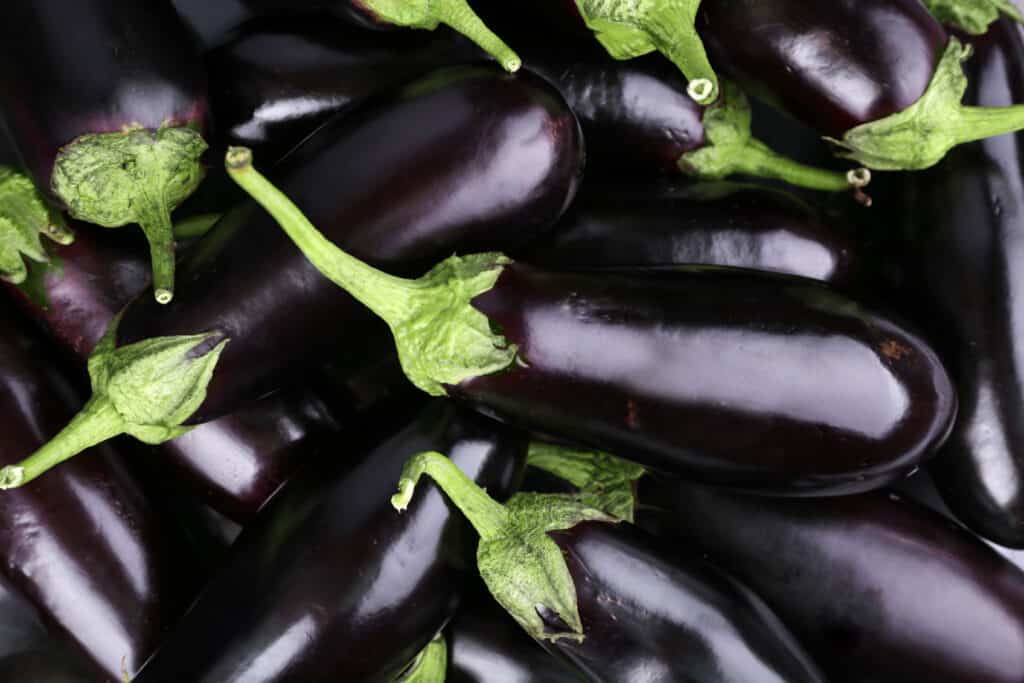
These purple foods are usually prepared as vegetables in the culinary world, but they are actually a type of fruit!
©Africa Studio/Shutterstock.com
Blackberries
If you’re thinking that there’s another berry on our purple foods list, you would be incorrect. Despite their misleading name, blackberries are not berries at all, they’re aggregate fruits. They’re also not really “black” but rather a shade of dark purple.
Blackberries are high in antioxidants, containing more than almost any other food. They also pack a supply of fiber and vitamins C, E, and K. In the U.S., these berries grow wild in the pacific northwest, with the largest crop concentration in Oregon. Mexico is the largest blackberry grower in the world.
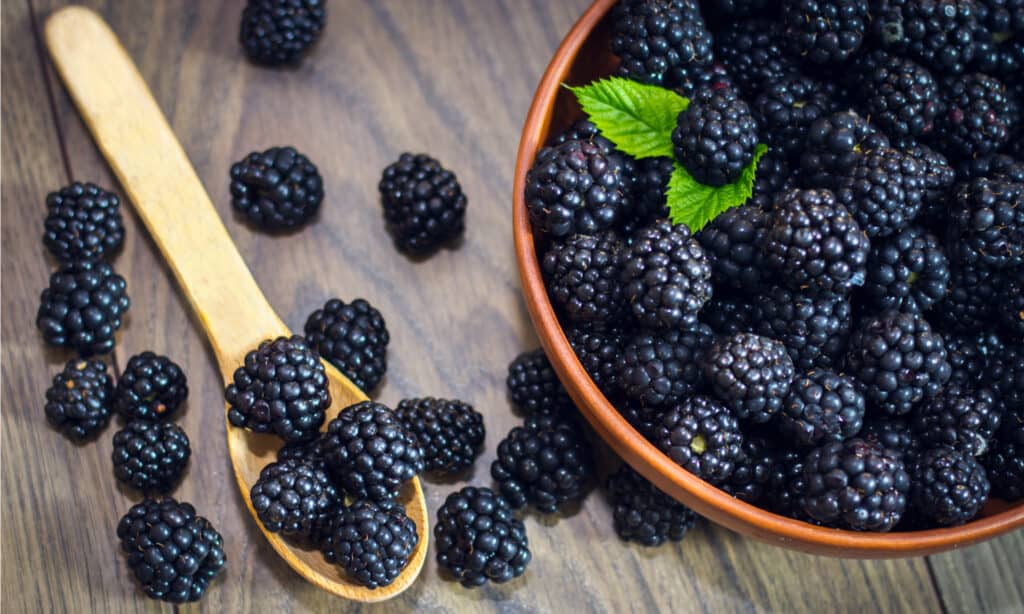
While ripe blackberries are actually a deep shade of purple, their unripe counterparts are red, like raspberries!
©Vipvit/Shutterstock.com
Blueberries
Blueberries are a type of true berry, and despite being called “blue”, the berries are actually purple. They are one of the few commercial crops that are native to North America. Blueberries have a long history of human consumption, with the first records of the fruit being over 13,000 years ago. Native Americans consumed blueberries, but called them “star fruits” or “star berries” because of the star shape that is on the blossom end of the berry.
The largest growing region for blueberries is British Columbia, Canada, and they are the country’s most exported fruit.
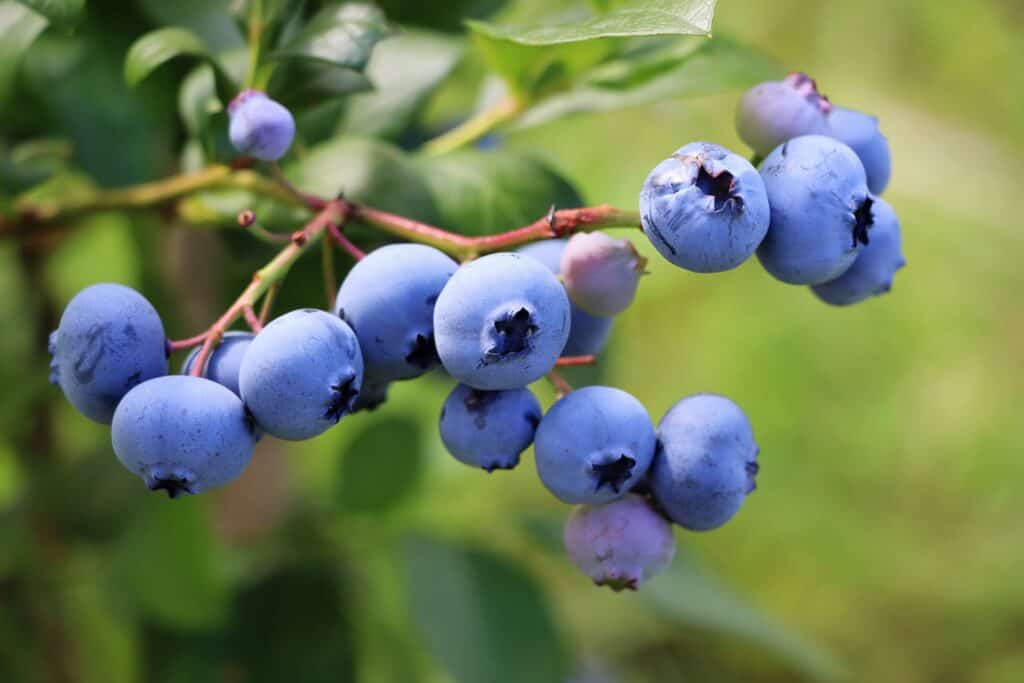
Blueberries are also called “star berries” or “star fruits” because of their star-shaped blossom ends.
©vaivirga/Shutterstock.com
Concord Grapes
Not all grapes are purple, but one variety, Concord grapes, are a deep purple color. They were developed by Ephraim Wales Bull in 1849. Bull was attempting to find the ideal Concord grape when he planted over 22,000 seedlings on his farm. He found a vine that met his standards, which he introduced to the market just five years later.
One particular aspect of Concord grapes that makes them unique is the fact that they’re “slip skin” grapes. This means that the skin slides off of the pulp easily, a quality that other varieties like muscadine grapes don’t have. They are the most common type of grape grown in the U.S.
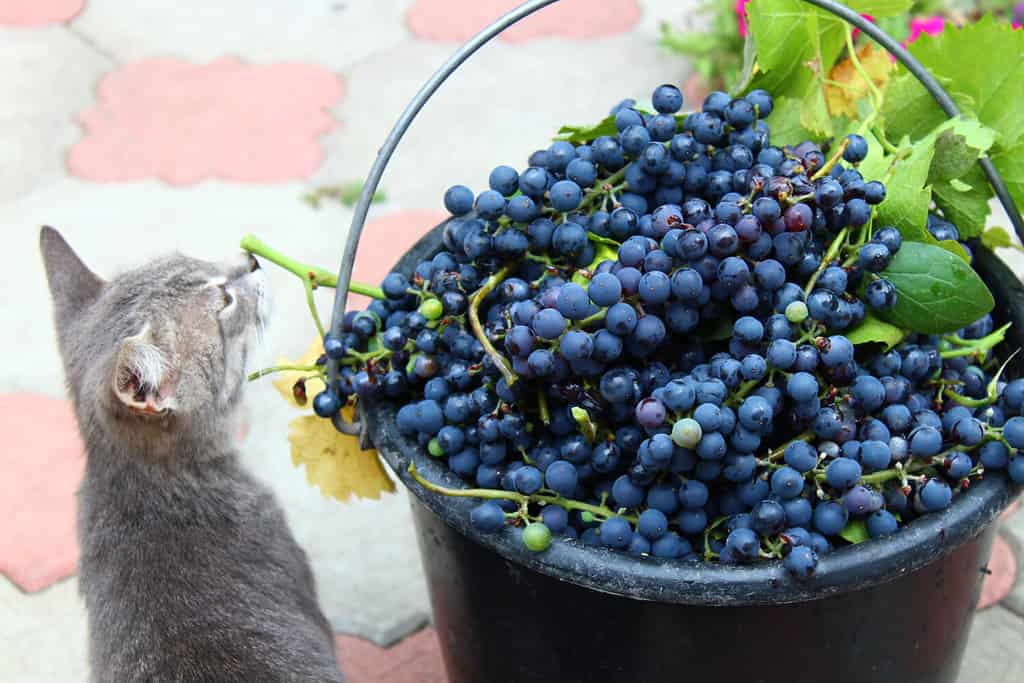
Concord grapes were first created in the 1800s by Ephraim Wales Bull, who selected the crop out of 22,000 other seedlings.
©DPaland/Shutterstock.com
Figs
Figs are one of the oldest fruits in the world, and many believe that it was figs, not apples, that were in the Garden of Eden. They were the first medals given to the winners of the Olympics, presented as laurels. Figs represent abundance, sweetness, and fertility. They are the most referenced fruit in the Bible.
But what is it about figs that makes them such prized fruits? Pliny, the Roman writer said that figs, “increase the strength of young people, preserve the elderly in better health and make them look younger with fewer wrinkles.” Any fruit with such anti-aging qualities is sure to be popular!
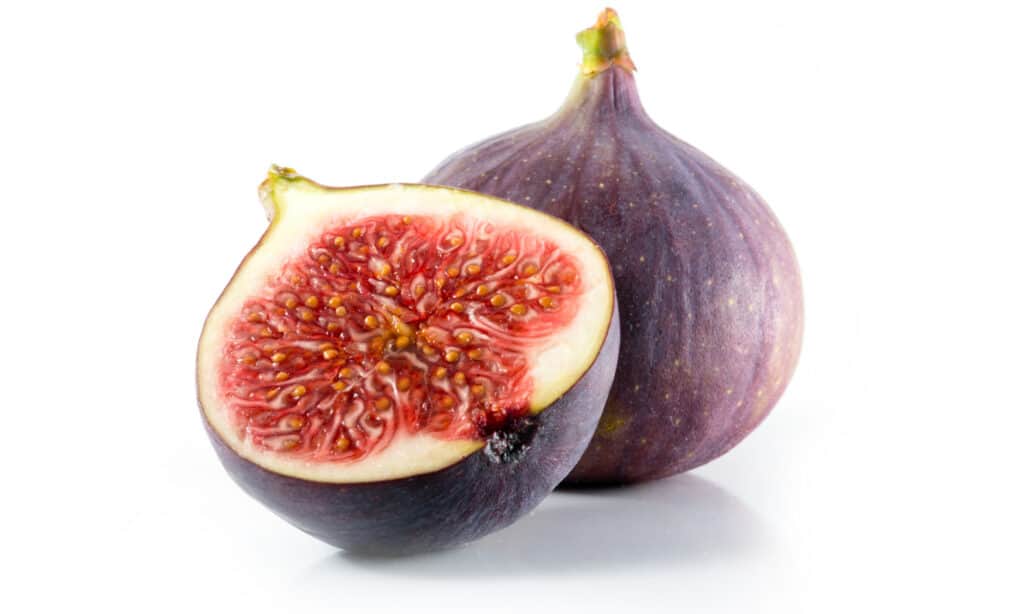
Some people believe that it was figs, not apples, that were present in the Garden of Eden.
©iStock.com/ori-ori
Passion Fruit
The purple variety of passion fruit is native to Argentina, Brazil, and Paraguay. Brazil is the leading consumer and producer of passion fruits. Their production accounts for around 60% of the world’s production of this fruit.
Technically, passion fruits are berries because they grow from a flower with only one ovary. Purple passion fruits, compared to their yellow alternatives, are smaller and sweeter.
If you’re having trouble sleeping, this purple fruit may help. Passion fruits have calming properties and are commonly used as sleeping aids. They are also full of vitamins A and C, and fiber and minerals.
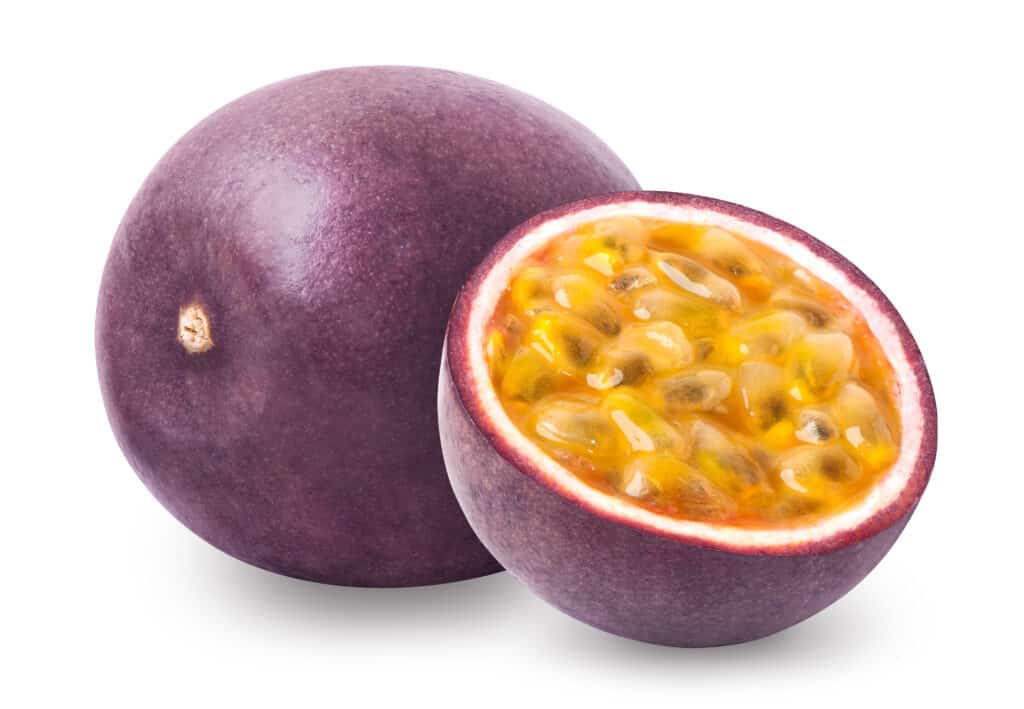
Passion fruit is a vine species within a larger family of flowering plants, Passifloraceae.
©Ekaterina Simonova/Shutterstock.com
Plums
Did you know that prunes are just another word for dried plums? These small, purple fruits are related to peaches and apricots and are eaten fresh, dried, and in jams. Plums grow on trees and can reach the size of baseballs or be as small as cherries.
Plums are part of the Rosaceae, or rose family. There are two main varieties of plums — European or Asian. European plums have firmer flesh and grow better in cooler climates, while Asian plums are softer and a bit larger.
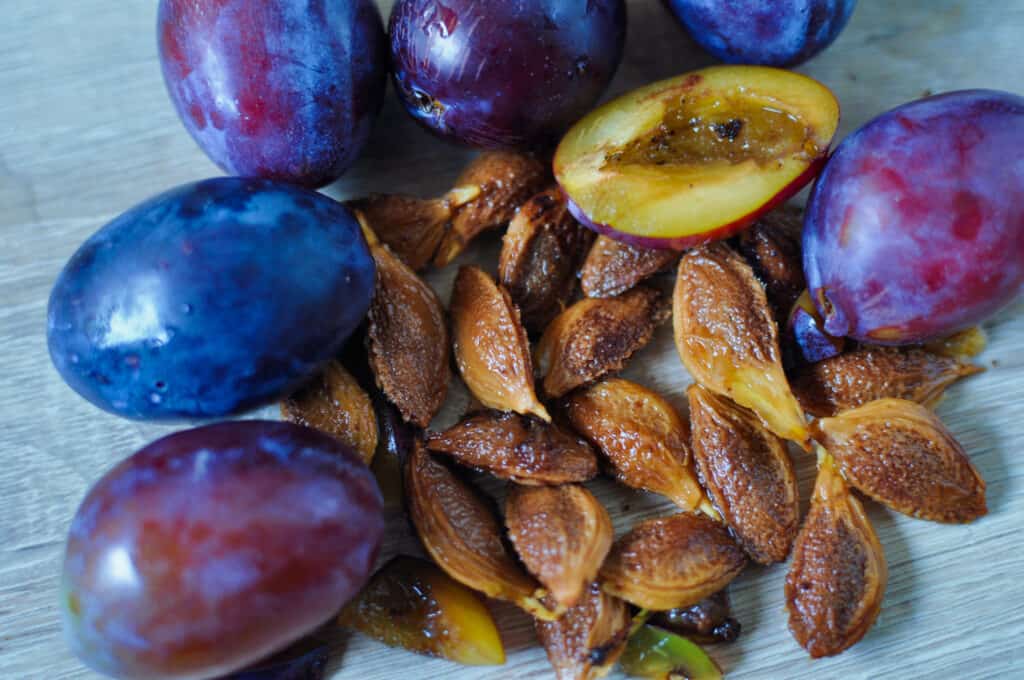
Did you realize that prunes are just another name for dried plums?
©IchBinJeffee/Shutterstock.com
Elderberries
Elderberries are one of the few berries that are poisonous while unripe. The fruit, along with the leaves and stems are full of a compound called cyanogenic glycosides. When metabolized by the body, this compound gets converted to cyanide. You can avoid this potentially dangerous situation by cooking the berries. In fact, some people also cook elderberry flowers by deep frying them in batter!
Elderberries are full of antioxidants as well as bioflavonoids like quercetin and glycosides. They are considered a “superfood” because they pack so many vitamins and minerals in a small package. For medicinal purposes, these berries are used to prevent illness and to help the body fight off infections.
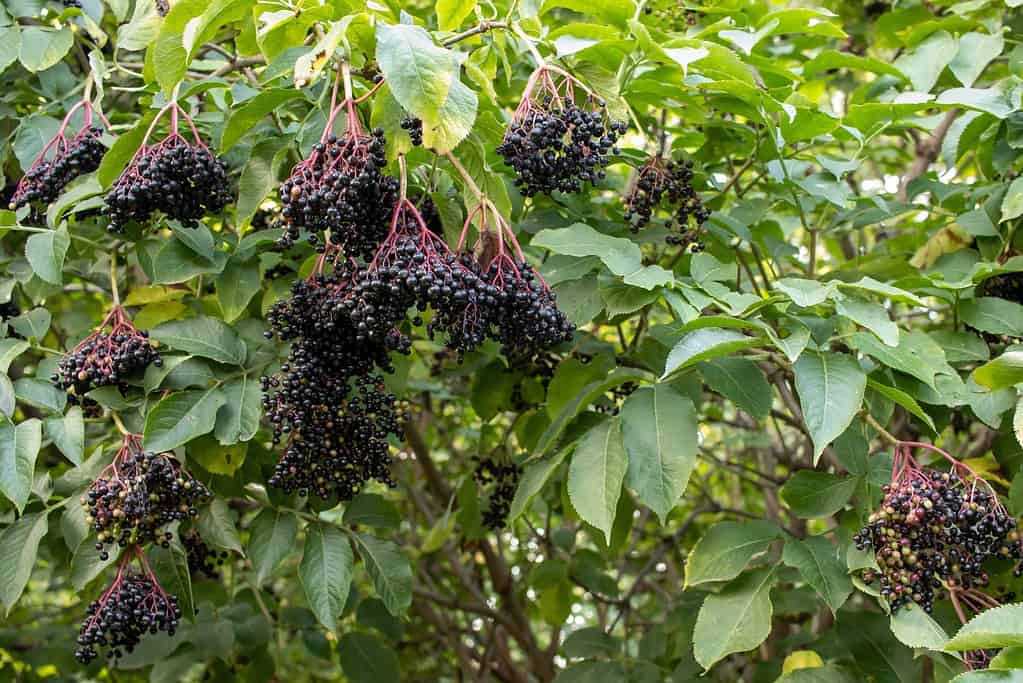
Many pollinating insects, like bees and butterflies, flock to elder tree flowers during spring and help produce the small berries!
©Juver/Shutterstock.com
Cranberries
Cranberries are another type of true berry, as well as one of the few fruits native to North America. Did you know that if you drop or throw a cranberry, it will bounce? Cranberry grower John “Peg Leg” Webb discovered their bounciness in the 1880s! They bounce because the berries contain air pockets. This is also what makes cranberries float.
Cranberries are one of the six symbols of Thanksgiving. That’s why you often see cranberry jam or sauce at the table during November. In fact, Thanksgiving is a very popular time for cranberries. Out of the 400 million pounds that Americans consume each year, a whopping 20% of them are eaten during the week of Thanksgiving!
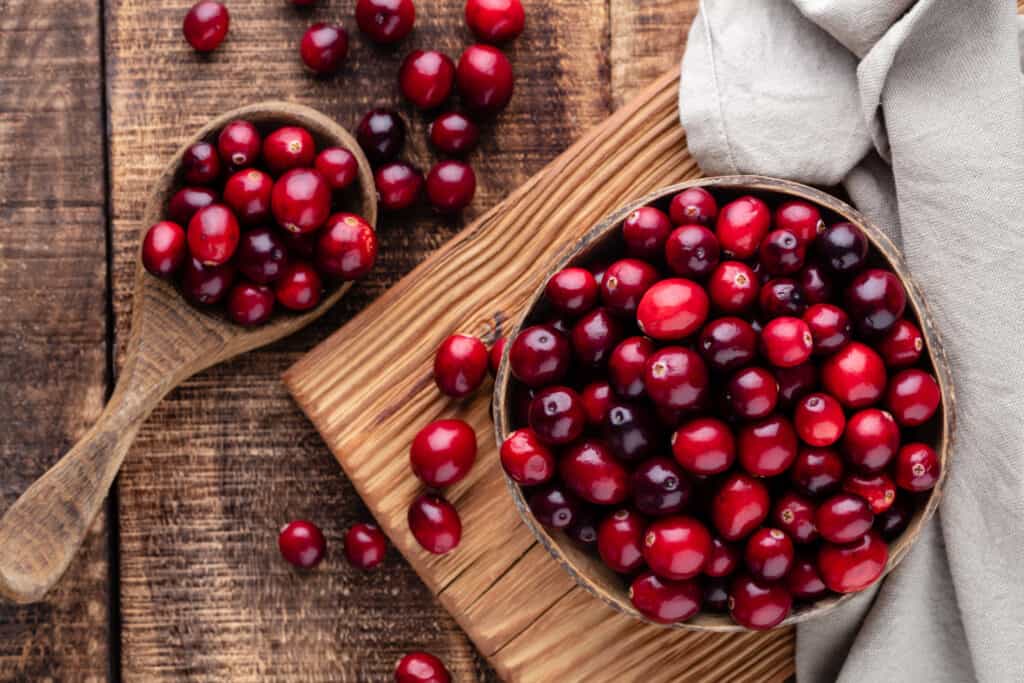
Cranberries are native to North America, and serve as one of the six main symbols of Thanksgiving!
©iStock.com/gitusik
Chokeberries
Chokeberries belong to the Rosacea family along with roses, plums, and cherries. They are native to North America and grow in swampy habitats. They get their name from the fact that they are too astringent to eat raw, causing many to choke on them. However, when chokeberries are cooked they make for great pie fillings, jam ingredients, and syrups.
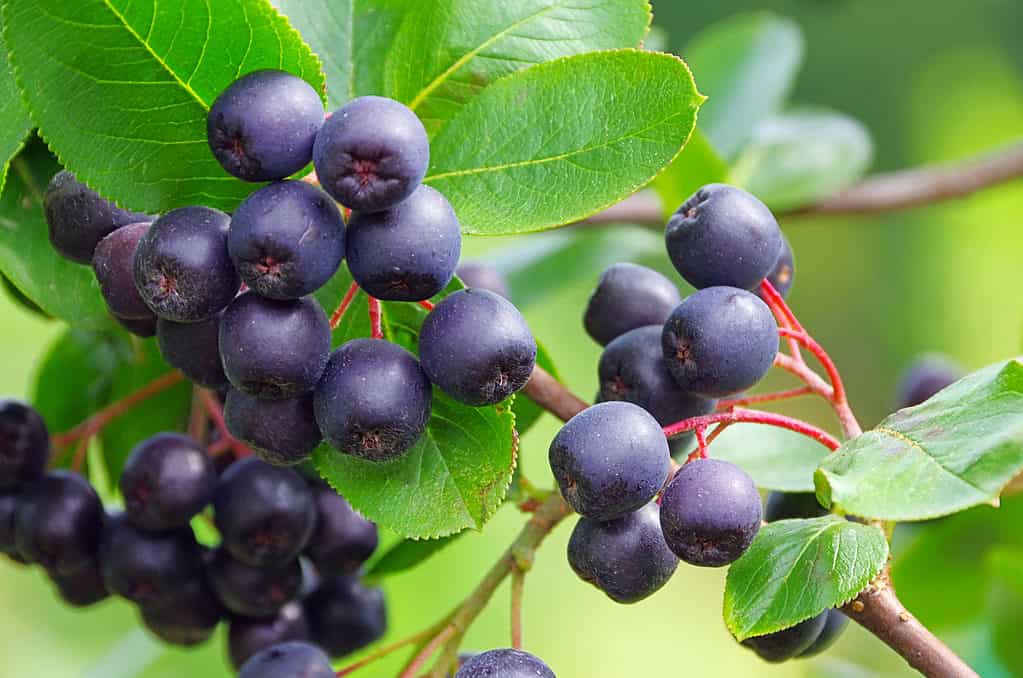
If their name gives you any clue, it’s best to not eat chokeberries raw because of their astringency.
©LianeM/Shutterstock.com
Bilberries
Bilberries are similar to blueberries but are a bit softer and juicer. While this is great for consuming on the spot, it makes the purple fruit very difficult to transport. Because of this, you can only find fresh bilberries at local markets and a few gourmet stores.
They originate from Europe, and are more commercially available there and in parts of Asia. The plant also grows in mountainous parts of North America. The berries are most notable for their use to solve medical problems like urinary tract infections and kidney stones. This is likely due to their high concentration of antioxidants that protect against unstable oxygen and free radicals in the body.

While bilberries may look similar to blueberries, they are a bit softer and juicier.
©Nata Naumovec/Shutterstock.com
Purple Mangosteen
Purple mangosteen is a fruit that is produced by evergreen trees in Southeast Asia. The fruits are popular for their sweet, juicy flavor. They aren’t the easiest plants to grow, which is likely why they survive so well in their rainforest habitats. The plants die if the temperature drops below 40°F.
After the fruits ripen, you can eat the inside portion. The outside shell is purple, tender, and easy to open once ripe. However, it is inedible. The edible portion of purple mangosteen is the inner whitish flesh that is similar in appearance to the inside segments of an orange.

Purple mangosteen is also known as The Queen of Fruits.
©kwanchai.c/Shutterstock.com
Açaí Berries
This purple fruit has grown in popularity as a “superfood” because of its high antioxidant levels. They have 10 times the amount of antioxidants present in grapes, as well as high levels of vitamins A, C, and E.
Açaí berries are eaten raw, drank in juice, or made in jams and jellies. They are also sold in health food stores in powder and capsule form. The taste is similar to that of a blackberry, but slightly more bitter.
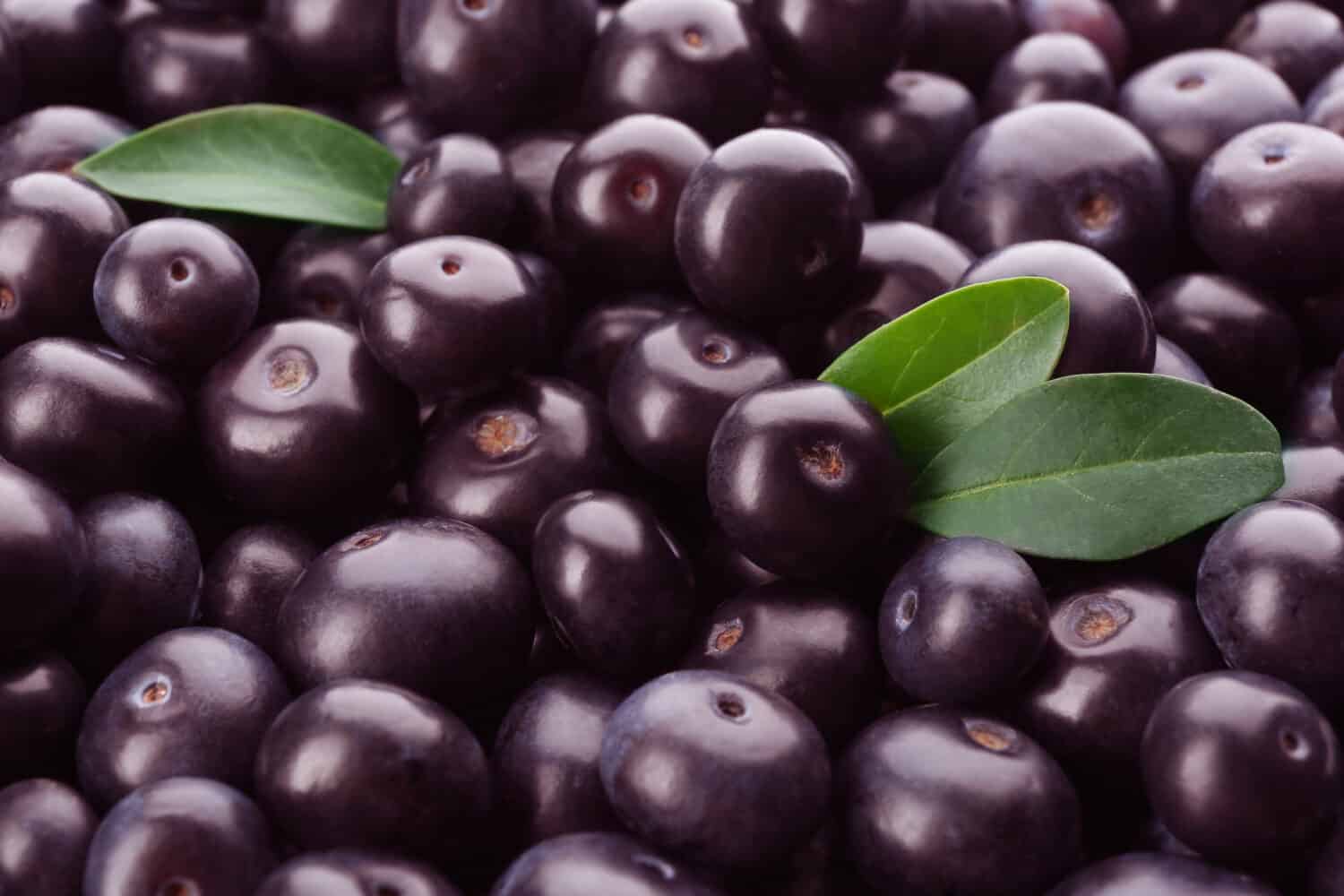
Fresh açaí berries are a deep purple color when they’re ripe.
©New Africa/Shutterstock.com
Black Currants
Black currants are small, bitter fruits native to Europe and northern Asia. It was first cultivated in the 11th century in Russia. The plants were banned in the U.S. in the 1900s because they spread fungus which killed white pine trees. However, they are not illegal anymore in most states. Despite that, Europe is still by far the largest producer of these berries.
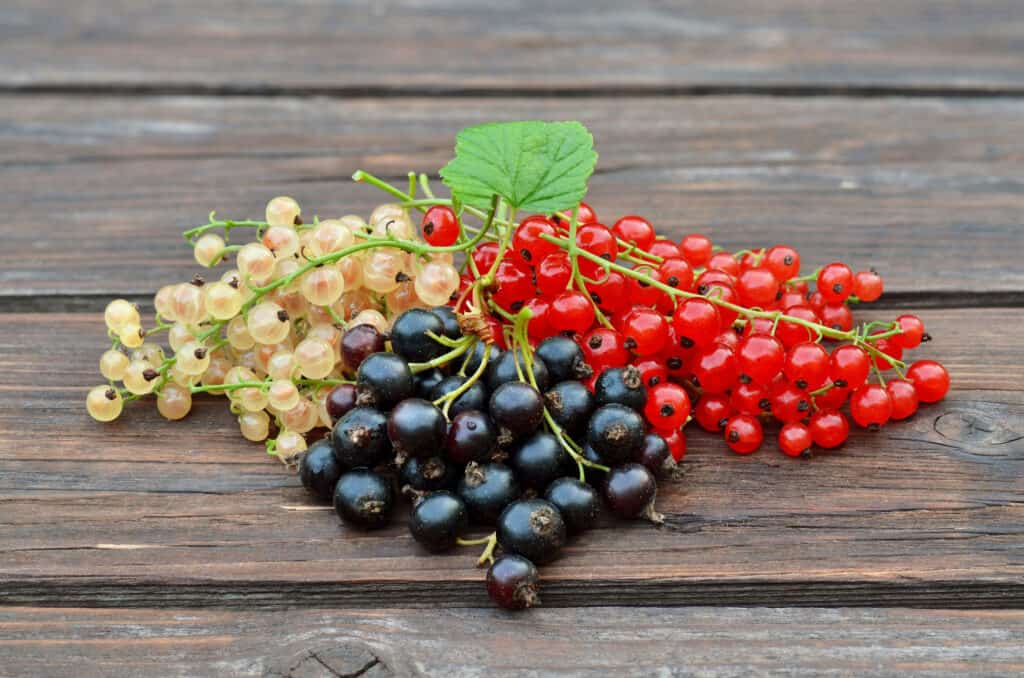
Currants have smooth stems and are typically red, purple, or blue. Blackcurrants were banned in the United States for almost a century.
©iStock.com/Yuliia Bilousova
Star Apples
Star apples are native to Panama and despite their name, are not true apples. They got their name from the star-shaped pattern in the middle of the fruits, which resembles the center of an apple. The fruits are soft and juicy, and are usually eaten fresh but can also be made into salads and desserts. They are high in vitamin C, phosphorus, and calcium.
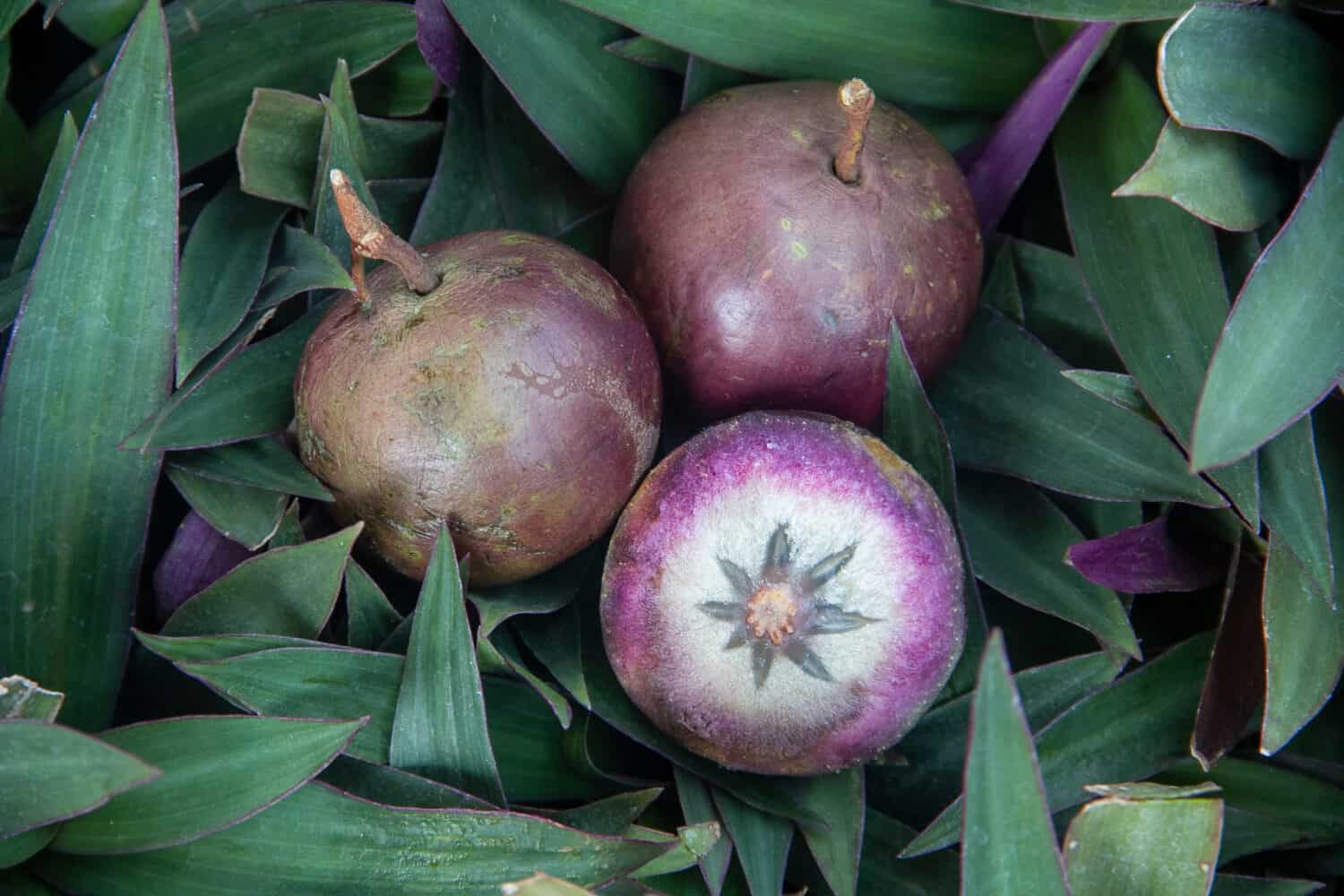
Star apples get their name from the star shape in their centers.
©Chalitatan049/Shutterstock.com
Summary of Purple Fruits
| Purple Fruits | |
|---|---|
| #1 | Eggplants |
| #2 | Blackberries |
| #3 | Blueberries |
| #4 | Concord Grapes |
| #5 | Figs |
| #6 | Passion Fruit |
| #7 | Plums |
| #8 | Elderberries |
| #9 | Cranberries |
| #10 | Chokeberries |
| #11 | Bilberries |
| #12 | Purple Mangosteen |
| #13 | Açaí Berries |
| #14 | Black Currants |
| #15 | Star Apples |
The photo featured at the top of this post is © iStock.com/gojak
Thank you for reading! Have some feedback for us? Contact the AZ Animals editorial team.







